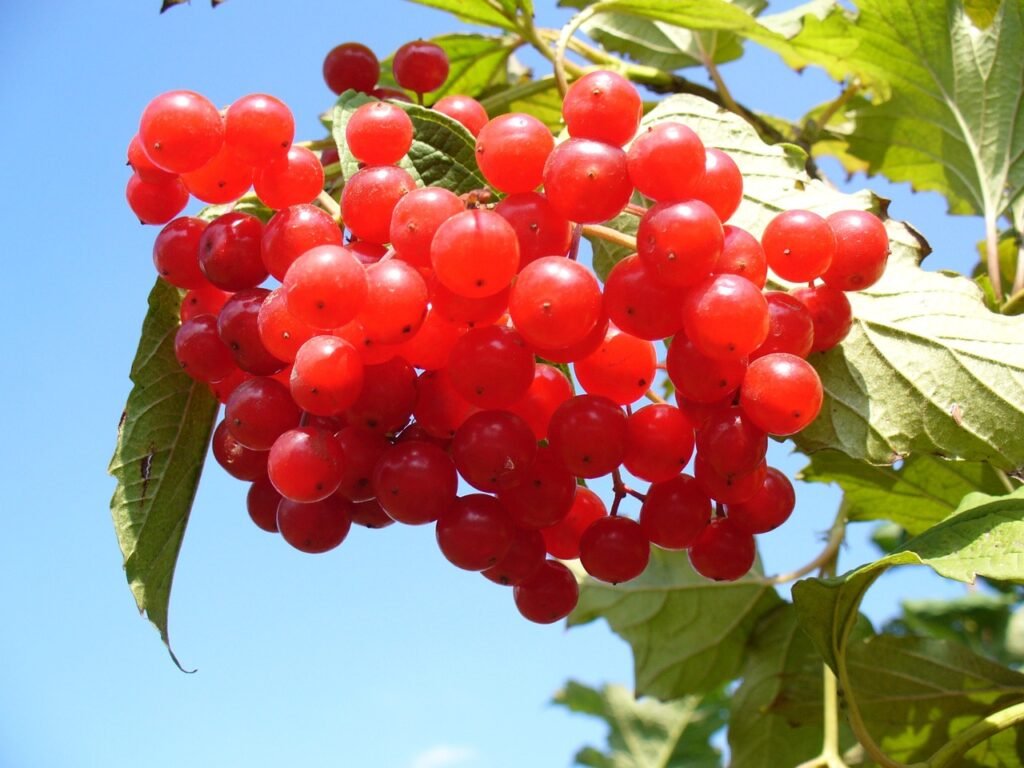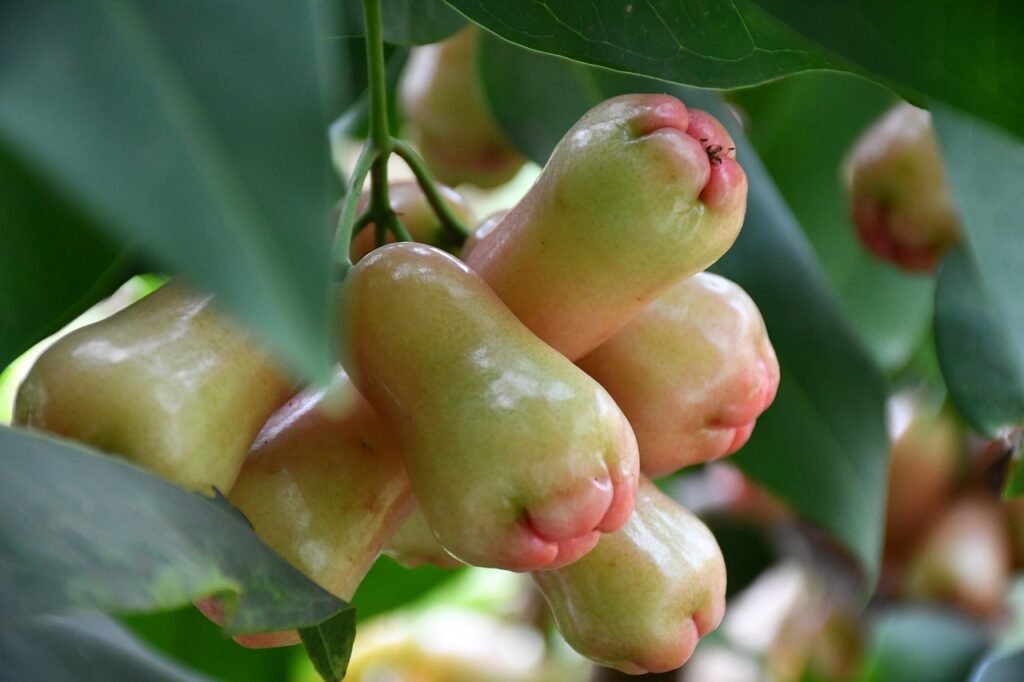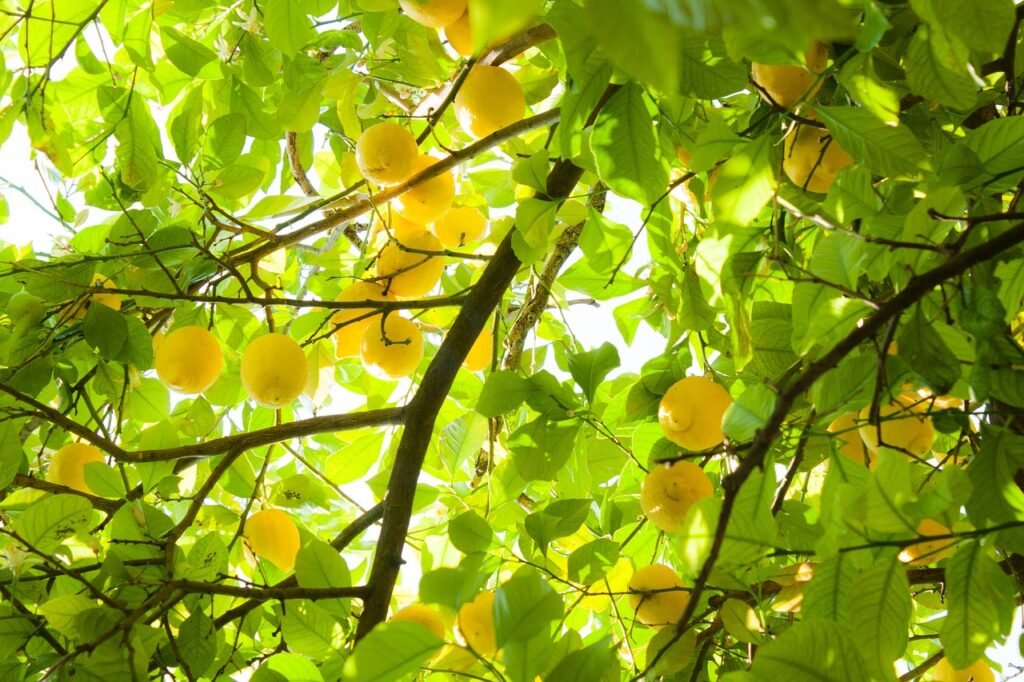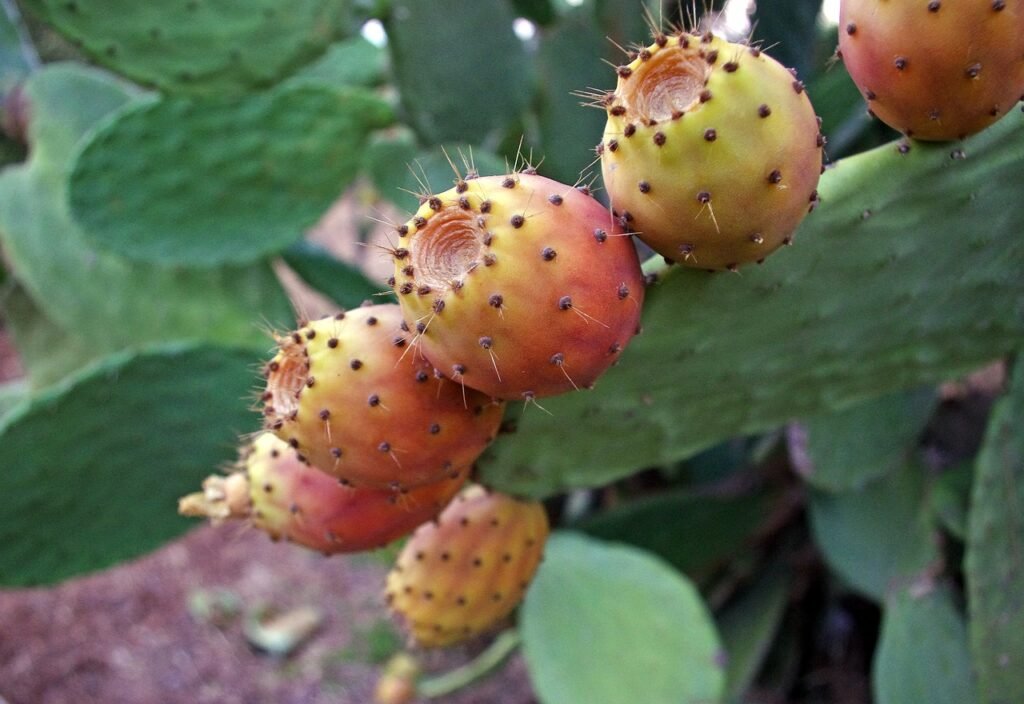Introduction
Are you looking to add some excitement and variety to your fruit selection? Well, look no further! In this blog post, we’ll be exploring an array of delicious fruits that all have one thing in common – they start with the letter “C”! From crunchy apples to juicy cherries, these fruits not only pack a punch when it comes to flavor but also offer a plethora of health benefits. So buckle up and get ready for a fruity adventure as we dive into the world of “C” fruits. Get ready to tantalize your taste buds and nourish your body with nature’s sweetest treats!
Fruits that start with C
Cantaloupe

This juicy and sweet fruit is packed with vitamin A, which promotes healthy skin and eye health. It also contains high levels of antioxidants that help fight against free radicals in the body.
Cherries

These small but mighty fruits are not only tasty but also rich in antioxidants and anti-inflammatory compounds. They have been linked to reducing inflammation, promoting heart health, and improving sleep quality.
Cranberries

Known for their tart flavor, cranberries are an excellent source of vitamin C and fiber. They also contain proanthocyanidins, which have been shown to prevent urinary tract infections.
Clementines

These mini oranges are easy to peel and make a perfect on-the-go snack. They are rich in vitamin C, folate, and potassium – all essential nutrients for maintaining a healthy immune system.
Coconut

Although technically considered a nut or seed, coconuts are often classified as fruits due to their inner fleshy layers. They provide electrolytes like potassium and magnesium while being low in sugar compared to other tropical fruits.
Custard Apple

This tropical fruit has a unique flavor profile, combining notes of banana, pineapple, and strawberry. It is rich in vitamins B6 and C and contains minerals like iron and magnesium.
Carambola (Star Fruit)

As its name suggests, this fruit has a star-shaped appearance when cut crosswise. It’s high in vitamin C and has a mild taste similar to apples or grapes.
Crabapple

These small fruits may not be as well-known as other fruits, but they pack a punch of nutrients including dietary fiber and beneficial plant compounds.
Citron

This large citrus fruit looks like a lemon but has thicker skin and a more acidic taste. It’s often used in cooking for its unique flavor.
Cactus Pear (Prickly Pear)

This exotic fruit is a good source of fiber, antioxidants, and vitamin C. Its vibrant pink color makes it a popular ingredient in cocktails or smoothies.
List Of Fruits Starts with C with their Key Information
| Fruit Name | Key Information |
| Cantaloupe | High in vitamin C, A, and B vitamins. Known for its sweet flavor and juicy texture. |
| Cherries | Rich in antioxidants and anti-inflammatory compounds. High in vitamin C and potassium. |
| Cranberries | Packed with antioxidants and phytonutrients that promote urinary tract health. Low in calories but high in fiber. |
| Clementine | Small citrus fruit loaded with vitamin C and beta-carotene. Easy to peel and perfect for snacking on-the-go. |
| Coconut | Contains healthy fats, fiber, iron, magnesium, zinc, copper, manganese, and selenium. Can help improve cholesterol levels and boost brain function. |
| Custard Apple | Also known as “cherimoya,” this tropical fruit is rich in fiber, vitamin C, and B vitamins. Has a creamy texture similar to custard hence its name. |
| Crabapple | A small apple-like fruit that contains high levels of flavonoids which have antioxidant properties. |
| Citron Melon | Low-calorie melon with a refreshing and tangy taste. Rich in vitamin C and minerals such as potassium, calcium, and magnesium. |
| Cherimoya | Also known as “custard apple,” this tropical fruit is high in fiber, vitamin C, and B vitamins. Has a creamy texture similar to custard. |
| Currants | Small berries that are rich in antioxidants, iron, vitamin C, and potassium. Can help improve blood flow and boost immune function. |
| Cloudberry | A rare fruit that is rich in vitamin C, antioxidants, and omega-3 fatty acids. Has a tart yet sweet flavor with a juicy texture. |
| Cape Gooseberry | Also known as “goldenberry,” this small orange fruit is high in vitamin C and has anti-inflammatory properties. Has a unique tart flavor with a crunchy texture. |
| Calamansi | A small citrus fruit commonly used in Filipino cuisine. Rich in vitamin C and has antioxidant properties. |
| Cumquat | A small citrus fruit that is packed with vitamin C and fiber. Can be eaten whole or used to make marmalades or preserves. |
| Cherry Plums | A hybrid between cherries and plums, these fruits are high in antioxidants, vitamin A, and C. Has a sweet and tangy flavor with juicy flesh. |
| Chinese Pearl Fruit | Also known as “leechee,” this small fruit is high in vitamin C and antioxidants. Has a sweet and juicy flesh with a unique texture. |
| Carambola | Also known as “star fruit,” this tropical fruit is rich in vitamin C, folate, and antioxidants. Has a star-like shape when cut and a sour-sweet taste. |
| Custard Plum | A small plum-like fruit that contains high levels of antioxidants, vitamin C, potassium, and iron. Has a tart yet sweet flavor with a juicy texture. |
| Chinese Hawthorn | Commonly used in traditional Chinese medicine for its health benefits. Contains high levels of antioxidants, vitamin C, and minerals such as calcium and potassium. |
| Canary Melon | A large melon with yellow skin and white flesh. Rich in vitamin A, B vitamins, magnesium, and potassium. Has a sweet yet mild flavor similar to honeydew melon. |
| Cape Gooseberry | Also known as “goldenberry,” this small orange fruit is high in vitamin C and has anti-inflammatory properties. Has a unique tart flavor with a crunchy texture. |
Health benefits of including fruits in your diet
Including fruits in your diet is not only delicious but also incredibly beneficial for your overall health. Fruits are packed with vitamins, minerals, and antioxidants that can help boost your immune system and protect against chronic diseases.
One of the main benefits of eating fruits is their high fiber content. Fiber helps promote healthy digestion and can prevent constipation. It also keeps you feeling fuller for longer, which can aid in weight management.
Fruits are also a great source of essential vitamins and minerals. For example, citrus fruits like oranges and grapefruits are rich in vitamin C, which is known to strengthen the immune system and promote collagen production for healthy skin.
Additionally, many fruits contain powerful antioxidants that fight off free radicals in the body. These antioxidants help reduce inflammation and lower the risk of conditions such as heart disease and certain cancers.
Another advantage of incorporating fruits into your diet is their natural sweetness. Instead of reaching for processed sugary snacks or desserts, opt for a piece of fruit to satisfy your sweet tooth while still nourishing your body with valuable nutrients.
Incorporating more fruits into your meals and snacks doesn’t have to be difficult either. Start by adding sliced berries or banana to your morning oatmeal or yogurt. Pack an apple or some grapes as a snack during the day instead of grabbing unhealthy options from vending machines.
Including a variety of fruits in your daily diet can provide numerous health benefits while satisfying your taste buds naturally! So why not embrace these colorful wonders from nature?
Nutritional information and unique qualities of each fruit
Cherries
These small, vibrant fruits are packed with antioxidants, vitamins A and C, and fiber. They have been shown to reduce inflammation and support heart health. Cherries also contain melatonin, which can help improve sleep quality.
Cranberries
Known for their tart taste, cranberries are rich in vitamin C and fiber. They also contain compounds called proanthocyanidins, which may help prevent urinary tract infections by preventing bacteria from adhering to the bladder wall.
Clementines
This citrus fruit is a cross between a mandarin orange and an orange. It’s high in vitamin C and provides a good amount of dietary fiber. Clementines are easy to peel and make for a refreshing snack on-the-go.
Cantaloupe
With its juicy flesh and sweet aroma, cantaloupe is not only delicious but also nutritious. It’s an excellent source of vitamins A and C, as well as potassium. The high water content in cantaloupe helps keep you hydrated too!
Coconut
While technically classified as a drupe rather than a true nut or fruit, coconuts offer numerous health benefits. They provide healthy fats that can promote brain function and weight loss when consumed in moderation.
These fruits offer unique flavors profiles along with various health benefits! Incorporating them into your diet can add variety while providing essential nutrients your body needs for optimal functioning.
How to incorporate these fruits into your meals and snacks
Incorporating fruits into your meals and snacks is a great way to add both flavor and nutrition to your diet. The following are some creative ideas on how you can enjoy fruits that start with the letter “C” in various dishes throughout the day.
To start your morning off right, try adding slices of cantaloupe or chunks of coconut to your breakfast bowl. These tropical fruits will not only provide natural sweetness but also give you a boost of vitamins and minerals.
For a refreshing mid-morning snack, reach for some crisp cucumber sticks or grab a handful of juicy cherries. Both options are hydrating and packed with antioxidants, making them an excellent choice to keep you energized throughout the day.
When it comes to lunchtime, consider including citrus fruits like clementines or grapefruits in your salads. Their tangy flavors complement leafy greens beautifully while adding vitamin C and fiber.
As for afternoon pick-me-ups, why not make yourself a delicious fruit smoothie? Blend together frozen strawberries, pineapple chunks, and fresh kiwi for a refreshing treat that’s loaded with vitamin C.
For dinner, get creative by incorporating cranberries into savory dishes like roasted chicken or pork tenderloin. The tartness adds depth of flavor while providing essential nutrients such as vitamin E and dietary fiber.
Don’t forget about desserts! Indulge in creamy coconut milk-based ice cream topped with caramelized bananas for an irresistible treat that satisfies both your sweet tooth and desire for healthy fats from coconuts.
By finding unique ways to incorporate these “C” fruits into every meal and snack, you’ll be able to enjoy their nutritional benefits while keeping things interesting in the kitchen. So go ahead – get fruity!
Delicious Recipe Ideas Using the Featured Fruits
Now that we’ve explored the health benefits and unique qualities of fruits starting with the letter C, let’s dive into some mouthwatering recipe ideas to incorporate these nutritious delights into your meals and snacks.
Citrus Salad
Combine segments of juicy clementines, grapefruits, and oranges for a refreshing salad. Drizzle with a honey-lime dressing and sprinkle some mint leaves on top for an extra burst of flavor.
Cantaloupe Smoothie
Blend ripe cantaloupe chunks with yogurt, a squeeze of lemon juice, and a touch of honey for a creamy and satisfying smoothie that will leave you feeling refreshed.
Coconut Chia Pudding
Mix chia seeds with coconut milk, vanilla extract, and a dash of maple syrup. Let it sit overnight in the fridge until it thickens into a pudding-like consistency. Top it off with slices of fresh cherries or cranberries before serving.
Cherry Salsa
Combine diced red cherries with chopped jalapenos, lime juice, cilantro, red onion, salt, and pepper for an irresistible salsa to serve alongside grilled chicken or fish.
Cranberry Oatmeal Bars
Make wholesome oatmeal bars by mixing dried cranberries into your favorite oatmeal cookie dough recipe. Bake until golden brown and enjoy as an on-the-go snack or dessert option.
These are just a few examples to get your creative juices flowing! Feel free to experiment with different combinations using the featured fruits – there’s no limit to what you can create in your kitchen!
Remember to always have fun while cooking and don’t be afraid to try something new!
Conclusion:
In a world filled with an abundance of fruits, it’s easy to stick to our familiar favorites. However, the journey towards optimal health and nutrition requires us to step out of our comfort zones and explore new horizons. That includes trying fruits that may not be as well-known as others.
By incorporating a variety of fruits into your diet, you can unlock a treasure trove of benefits for your body. From boosting your immune system to promoting healthy digestion, these natural wonders have so much to offer. And when it comes to fruits that starts with ‘C’, there are several options worth exploring.
Citrus fruits like oranges and grapefruits bring a zesty burst of flavor while providing ample amounts of vitamin C and antioxidants. These tangy delights can be enjoyed on their own or added to salads, smoothies, or even savory dishes for an extra kick.
Cherries offer more than just their vibrant red hue; they’re also packed with antioxidants and anti-inflammatory properties that can help reduce pain and inflammation in the body. Whether you snack on them fresh or use them in baking recipes or sauces, cherries add both sweetness and nutritional value.
Coconuts might seem exotic but are becoming increasingly popular due to their versatile uses. From coconut water that replenishes electrolytes naturally after exercise to coconut milk used in curries and desserts, this tropical fruit offers hydration and healthy fats.
Another lesser-known ‘C’ fruit is carambola or starfruit. This unique fruit has a distinct star shape when sliced crosswise which makes it visually appealing on any plate! It is rich in vitamin C, fiber, potassium making it an excellent addition to salads or even juiced for a refreshing drink.
Frequently Asked Questions (FAQs)
What are some common fruits that start with the letter C?
Some common fruits that start with the letter C include cherries, cranberries, cantaloupe, cherimoya, and clementines.
Are cucumbers considered a fruit?
Yes, cucumbers are actually classified as a fruit because they contain seeds and develop from flowering plants.
Can you eat the skin of a cantaloupe?
Yes, you can eat the skin of a cantaloupe. However, it is recommended to wash it thoroughly before consuming to remove any dirt or bacteria.
What is the difference between a cherry and a chokecherry?
Cherries and chokecherries may look similar but they belong to different varieties of trees. Chokecherries have smaller fruits and are more tart compared to regular cherries which are sweeter in taste.
How do you know when cranberries are ripe?
Cranberries are typically harvested between September and October when they reach their peak ripeness. They have a bright red color and bounce when dropped on a hard surface.
Can you eat clementine peels?
Yes, clementine peels are safe to consume but they may not be very pleasant in taste due to their bitterness.
Can I freeze cherries for later use?
Yes, cherries can be frozen for later use by placing them in an air-tight container or freezer bag





